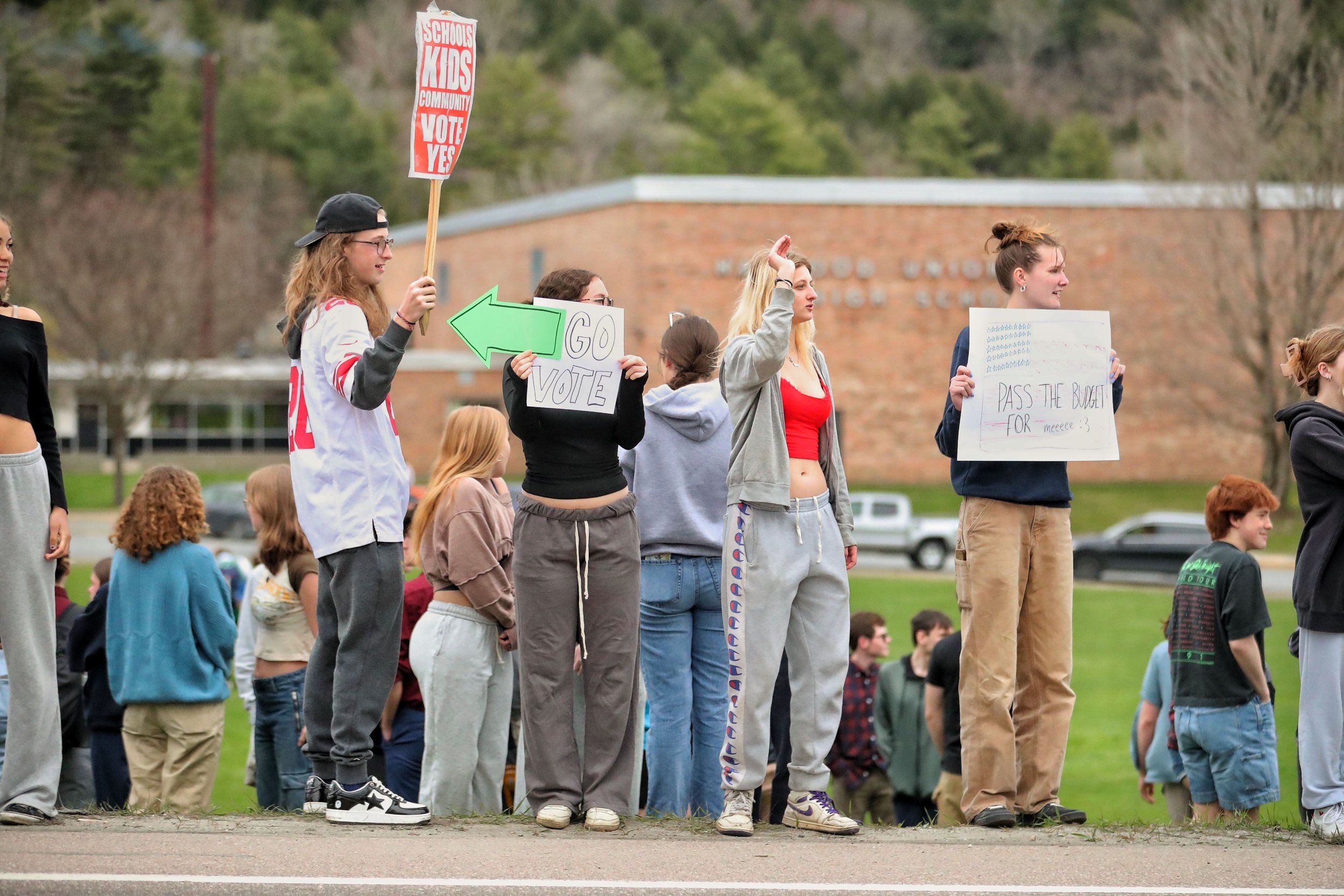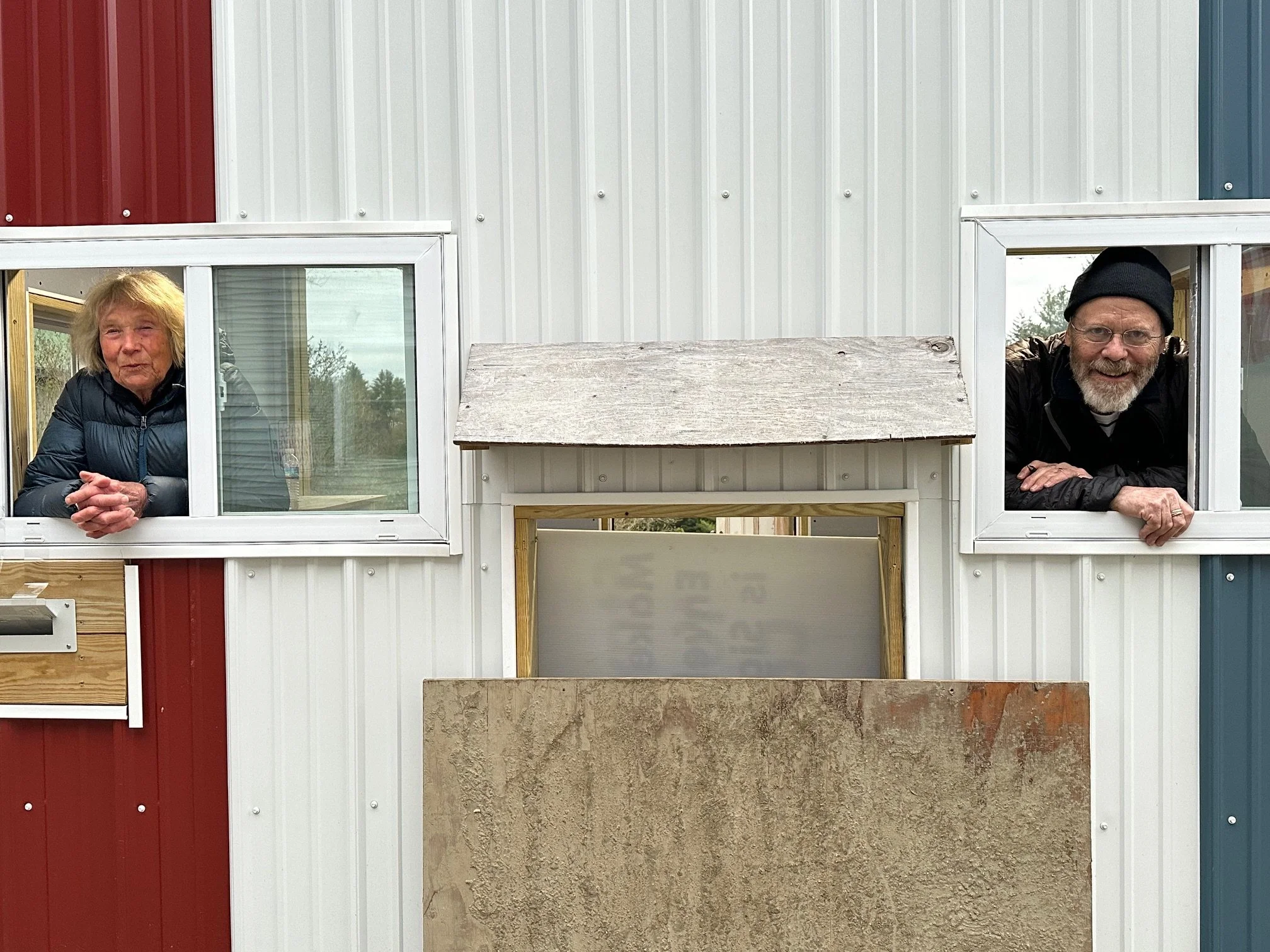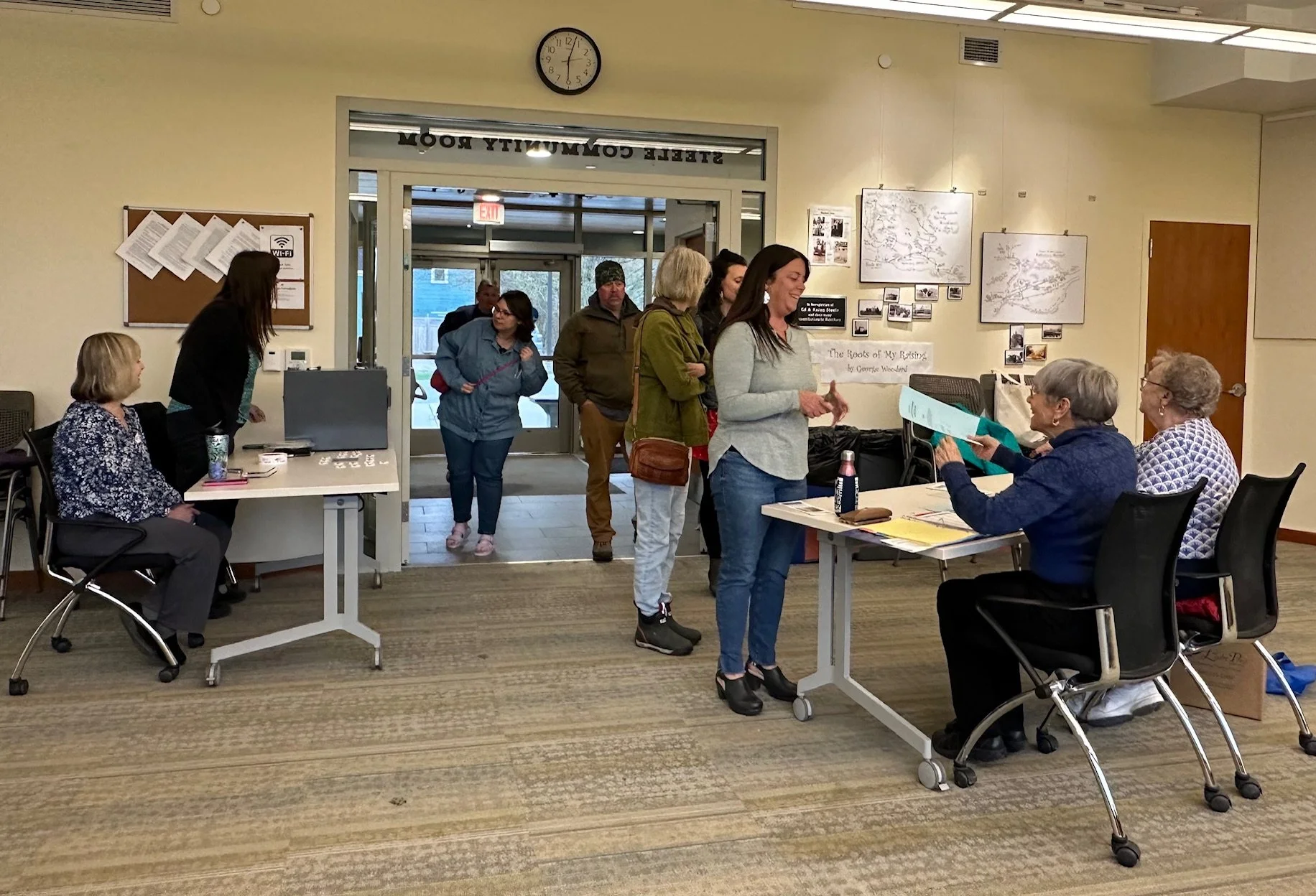Harwood voters reject second school budget
May 1, 2024 | By Lisa Scagliotti By a vote of 1,731 to 1,565, voters on Tuesday told Harwood Unified Union School District leaders to go back to the drawing board to draft yet another budget proposal to run schools for the 2024-25 school year.
Harwood students leave class on Tuesday to wave signs at passing vehicles on Vermont Route 100 urging the public to support the school budget at the polls. Photo by Poppy Woods
Just after 10 p.m., Superintendent Mike Leichliter shared results that voters rejected the $48.8 million proposed budget, 52.5% to 47.4%. The margin of defeat —166 votes—was much closer than the first unsuccessful vote on Town Meeting Day in March when voters turned down a $50.8 million proposal, 2,640 to 1,439, or 64% to 35%.
Scroll over to see figures. Source: HUUSD. Chart by Julia Bailey-Wells
“The last few months have been challenging for our schools and our community. Going into this budget season the administration and school board had to make some difficult decisions regarding programs, services, and personnel,” wrote Leichliter along with Harwood School Board Chair Ashley Woods and Vice Chair Cindy Senning in a statement to local newspapers and shared with the community today.
They said they next will need to look closely at recommendations for additional budget cuts. “The school board has already discussed a contingency plan if this second budget was not successful and more budget reductions were necessary. The school board and administration will work collaboratively with town clerks in order to establish a date for a third vote as soon as possible,” they said. “The school district will communicate more details about the next steps in the coming days.”
The School Board’s next regularly scheduled meeting is May 8. Asked if the board might meet sooner to discuss the next budget proposal, Woods replied, “No, we are going to meet next Wednesday. We need the time to decompress and get ready to start over. I am heartened because [the vote] was a lot closer.”
Harwood is one of 30 school districts across the state where budgets failed to win voter approval in the March 5 election. As revotes have begun to take place, multiple school districts have now seen second budget failures and are headed for third votes.
Jill Smith and Dan Cardozo work the drive-through checkout booth at the Duxbury polls on Tuesday. Duxbury had the highest voter turnout in the district—35.6%. Photo by Lisa Scagliotti
Voter turnout
The second attempt to adopt a school budget for next year included brisk early voting leading up to Tuesday’s all-day balloting across the school district. After the polls close, ballots from Duxbury, Fayston, Moretown, Waitsfield, Warren and Waterbury are combined and tallied for one vote count. Elections officials from each town gathered at Harwood Union High School for that process Tuesday night.
Voters stay in their cars to vote in Duxbury on Tuesday. Photo by Lisa Scagliotti
Town clerks did report turnout details that showed overall voter participation was 29% of the district’s approximately 11,400 registered voters. That compares with a 36% participation of registered voters who cast ballots in March, which also was an election day for local offices and the U.S. Presidential primary.
Duxbury had the highest participation on Tuesday with 413 ballots cast—35.6% of the voter checklist, according to Town Clerk Maureen Harvey. Duxbury continued using its drive-through voting format with vehicles moving through quickly during the day as voters marked the one-question ballot.
Scroll over to see figures. Source: Town clerks. Chart by Julia Bailey-Wells
Town clerks elsewhere reported that Waitsfield and Moretown balloting came to 33.6% and 31.5% respectively; Warren logged just under 29%; Fayston had 27% of its voters cast ballots, and Waterbury’s turnout was 25.4%.
Waterbury election officials Marion Howes and Linda Gravell during a break late Tuesday afternoon at the polls. Photo by Lisa Scagliotti
More cuts ahead
The second rejected budget represented a spending increase of 7.63% over the current year’s budget —down from a nearly 12% increase that the original plan relied upon. It would have resulted in school property tax increases ranging from 13.4% in Duxbury to 21.4% in Warren with Waterbury’s increase in between at 17%.
That would have amounted to tax increases for every $100,000 of assessed property value of $254 in Duxbury, $324 in Waterbury and $439 in Warren, according to district calculations.
Waterbury voters line up to cast ballots in the Steele Community Room at the municipal complex on Tuesday. Photo by Lisa Scagliotti
Under state law, the school district needs a budget in place by June 30 when the current fiscal year ends. If voters don’t approve a spending plan by then, the district would be able to borrow funds equivalent to 87% of the last approved budget until a voter-approved plan is adopted. The 2023-24 school budget is $45.4 million; 87% of that would be $39.5 million.
At informational sessions before Tuesday’s vote, Harwood officials explained that additional votes would continue to take place until a new budget is adopted. However, a new proposal in the state legislature aims to alter that process in state law. Dated April 25, the measure is not contained in a specific bill yet and is referred to as “Draft No. 1.1 – school district budget alternative process.” The proposal describes a way for school boards in districts with three or more failed budget votes to recommend a budget to implement after review by a special state panel, bypassing voter approval. The measure is not yet contained in specific legislation.
Freshmen Charlotte Burks and Dahlia Jordan. Photo by Poppy Woods
Harwood’s budget that voters rejected on Tuesday reflected cuts by school administrators and the Harwood School Board that dropped the bottom line by $2 million from the first proposal voted on in March. The largest reduction was $1 million after eliminating an addition to the district’s Maintenance Reserve Fund. When school officials initially put the budget together in January, they looked to beef up that account to help with building repairs and upgrades. The fund currently has about $2 million while the project list for the next four years is just over $19 million. The million-dollar addition was separate from the transfer of $535,000 from a 2022-23 budget surplus that voters approved to put into the maintenance fund.
The revised budget also trimmed $632,000 for next year from maintenance and operations, teacher and staff training, supplies, and more. In addition to 13 positions cut from district staffing in building the original March budget, the second rejected proposal cut three additional positions bringing the total to 16.5 fewer full-time equivalent positions proposed for 2024-25. It also would have left several additional positions vacant to save another $400,000.
Following the Town Meeting Day budget failure, school district Finance Director Lisa Estler presented several budget-reduction scenarios to the School Board. The board chose the one that cut the fewest additional jobs. Other versions from Estler contained cuts of 13 or 22 staff positions.
Senior William Burks and junior Cadence Powers. Photo by Poppy Woods
At the board’s April 3 meeting when it chose the budget version for the second vote, it also reviewed a next-case scenario that would be a starting point should the April 30 vote fail. That scenario is included in a slide presentation from that board meeting. It has a bottom line of $47.7 million—$3 million lower than the March budget—and would cut 10 more full-time equivalent positions from the April 30 budget. Its tax rate would be 1 cent lower than the current 2023-24 rate ($1.43 vs. $1.44). Still, the education funding formula’s final calculations for property taxes would mean increases of 10% to 19% with Duxbury being the lowest and Warren the highest; Waterbury’s increase would be 13.7%. That would translate to school tax increases of $193 in Duxbury, $260 in Waterbury, and $371 in Warren for every $100,000 in assessed property value.
Note: In the April 3 School Board meeting attachments, the slide presentation has a typo for the Scenario 4 tax implication for Warren per $100,000 property value. It should be $371. The tax implications are contained in a detailed spreadsheet on that meeting agenda and linked above.
Below is the full statement from Harwood Superintendent Leichliter and School Board leaders Woods and Senning following the vote tally on Tuesday night.
We are sorry to report that the second attempt for a Harwood Unified Union School District 2024-2025 school budget failed by a vote of 1565 in favor (47.42%) and 1731 opposed (52.45%).
The last few months have been challenging for our schools and our community. Going into this budget season the administration and school board had to make some difficult decisions regarding programs, services, and personnel knowing that, among other factors, our federal Elementary and Secondary School Emergency Relief Fund (ESSER) money was expiring while the lingering academic, social, and emotional impacts from the pandemic are still a reality for many of our students.
Additionally, with changes from Vermont Act 127 having a negative impact on our district finances we are aware that we still have challenging decisions ahead of us.
The school board has already discussed a contingency plan if this second budget was not successful and more budget reductions were necessary. The school board and administration will work collaboratively with town clerks in order to establish a date for a third vote as soon as possible.
The school district will communicate more details about the next steps in the coming days.
Thank you again for your ongoing support of our schools during these challenging times.
Sincerely,
Ashley Woods, Board Chair
Cindy Senning, Board Vice Chair
Dr. Mike Leichliter, Superintendent of Schools







